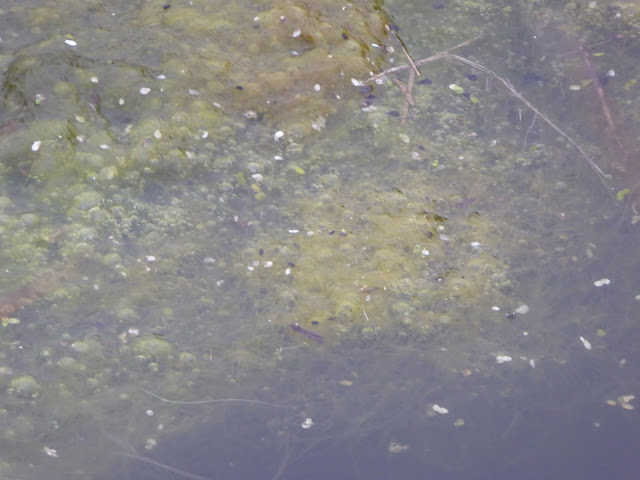We have visited Wicken Fen nature reserve in Cambridgeshire many times, but I don't think we have ever found the reserve as busy as it was last Saturday. It was, of course, half-term. It was also what I might describe as an exceptionally warm summer-in-spring day. Some (the agile ones) climbed the new temporary viewing tower and were able, for a few moments at least, to look beyond the crowded boardwalks to the expansive reed beds and wide skies that are such a feature of this area.
Perhaps with so many visitors about it was not surprising that we failed to see many birds. However we watched a Marsh harrier in the distance; and were treated to some lovely views of a Kestrel, as you can see in the photos below.
The small boat, the Mayfly, that is used for boat trips up the lode a bit later in the season was still in dock...
As I peered into a watercourse where we have seen Grass Snakes and Caddisfly larvae in summer, I noticed this rather fine (?duck) feather...
The windpump is such an iconic feature of this reserve, and those who follow my blog will know that I can never resist a shot or two...
We very rarely see Sparrows in our home patch so it is always a joy to hear their song when we walk down towards the Fenman's Cottage in Wicken.
Well, you know I find the wind pump an irresistible subject...
I felt the picture below represented the sense of 'winter into spring'...
Catkins have been in evidence for some weeks now, but this was my first 2019 sighting of Pussy Willow...
Yet more views of the wind pump...
... and the Kestrel.
I believe the tree below is an Alder, sporting its catkins and (false) cones...
Our last visit had been in November. Such a lot of work had taken place on the reserve since then. We don't ever remember seeing this pool area so clearly. You can see where reeds have been harvested.
I took my sketch book but that was as far I got: one of these days I will try to catch those sails in pen and ink...
There are some beautiful little signs around the reserve, like this one ...
... and this one on a wooden seat in an area where you can sit and watch dragonflies in the summer.
The area which forms the Butterfly Trail in summer is always one of my favourite parts of the reserve, and this area is also signed appropriately...
We noticed on our November visit that the path around the Butterfly Trail area of the woodland walk was receiving attention. This time the path had been smoothed out and, ramp apart, felt much safer for those of us who use walking sticks.
A huge amount of work had been done on the trees and bushes in this area: take a look at my photo below. I gather this is all part of good husbandry and conservation. I will watch this space with interest in the months to come to see what transformations take place.

We so enjoy looking out for species such as the Brown Argus on this part of the reserve. It is my favourite spot for doing the annual butterfly counts. You can read about the Wicken Fen Butterfly Trail here. A list of (named) butterflies seen in the area can be found here.
Like most people, I feel strongly that the next generation should be given every opportunity to enjoy nature and to learn the names of species for, surely, we care most about the things we know. Like Robert Macfarlane, Margaret Atwood, Mark Cocker and others, I feel sad that so many nature words were removed from the Oxford Junior Dictionary to make space for words that fitted the zeitgeist of our scientific and technological age. We need technology, but we also need biodiversity and literature to help us appreciate nature. During our time on the nature reserve, we spoke to members of one all-age party who were enjoying a checklist of wildlife (reminiscent of the popular I-spy books), ticking off the features and creatures they encountered, and listening out for the call that would identify a particular bird. I was impressed.
Having read a post on Jim's Birding Blog about visitors to the Brecks, I began to wonder on that busy Saturday, and this was February and not August, about the effect of the human footprint on the rare creatures (some brought to light during Chris Packham's Bioblitz in 2018) who live on the reserve.
I am still wondering...
We headed back to the entrance for a pot of Earl Grey (David and Caroline), a cheese scone (David) and a gingerbread sheep (guess who!). It was lovely to be able to drink our tea outside in such balmy conditions.
We listened to the Sparrows and watched them watching us...

We love the changing light and the way it affects the landscape. The sun was low by this stage of the day...
I have just found this site which gives quite a good summary of the reserve. And if you like facts and figures, this site might also be of interest!
It was time to leave the fen to its night-time creatures and head for home.

















































